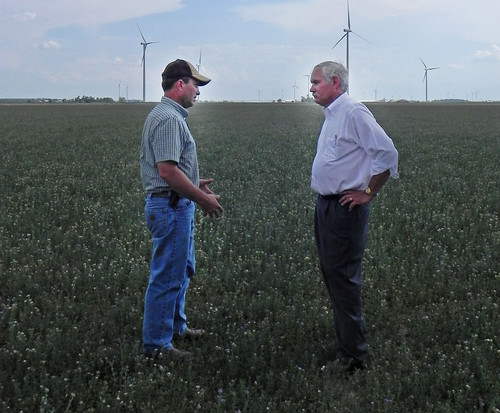
The 2012 drought dried up more than just crops. For many U.S. farmers, it also dried up savings, material resources, and perhaps saddest of all, hope.
“The drought of course impacted our crop yields tremendously,” said veteran Ohio dairy farmer Leon Weaver. “Corn yields were about 50 percent of normal. Dairymen are exiting this business in droves.”
But for Weaver and nearly one hundred other Ohio, Michigan and Indiana farmers who gathered recently in rural Henry County, Ohio, hope was a commodity worth trading as they shared, in roundtable fashion, their ideas on how to access resources and rise from the dust.
"Who knows better what the needs and issues and concerns are than the people who live and work and do business in the area?" said Colleen Callahan, USDA’s disaster recovery coordinator for drought. "There is no silver bullet, so as the Secretary of Agriculture says, ‘we're going to have to be smarter.'”
Callahan told the group the bottom-line purpose of the meeting was to identify what programs already are in place that can be utilized right now, not only at USDA, but through other agencies as well.
The tri-state agricultural producers and rural stakeholders were joined by federal and state officials at Northwest State Community College in Archbold, a campus tucked among acres of ordinarily productive farmland. The meeting was jointly coordinated by The Ohio State University Extension, the Ohio Department of Agriculture, Northwest State, the Center for Innovative Food Technology, and Ruralogic, a business that focuses on bringing foreign outsourced jobs back to rural America.
Soybean farmer Roy Klopfenstein said he was inspired by the exchange of ideas and heartened to know public officials are listening.

“I think (the meeting) will be very productive in the fact that, our message of what we need as far as tools as farmers will get back to Washington,” said Klopfenstein. “Hopefully, they will implement changes that are productive, not destructive, and affect policy that keeps a safe and abundant food supply.”
In coordinating the federal family, USDA worked closely with the Department of Commerce through its Economic Development Administration, the Small Business Administration and the Federal Emergency Management Agency. Similar meetings have taken place in Arkansas, Colorado, and Nebraska. There are more than 76,000 identified farms in Ohio alone, where agriculture is the biggest business in the state.
Callahan assured attendees that while the meeting itself may be over, the hard work is just getting underway.
“The reality is this meeting was actually the foundation of the work yet to be accomplished. Now we will be working through the National Disaster Recovery Framework (NDRF) to address the issues that were raised.”
The NDRF links local, state, Tribal and federal governments, the private sector and nongovernmental and community organizations that play vital roles in recovery.
To learn more about recent drought meetings click here. To learn about USDA’s efforts to respond to the drought and resources available to you click here.
